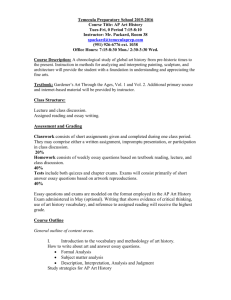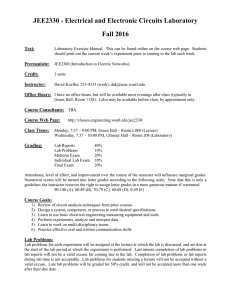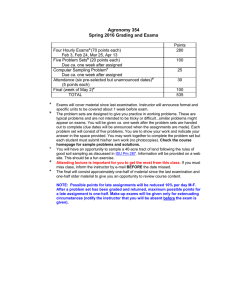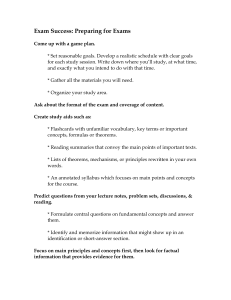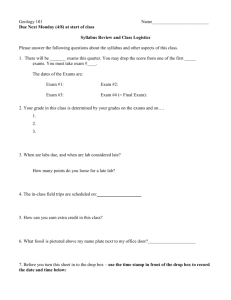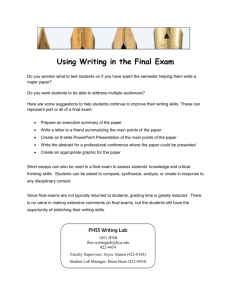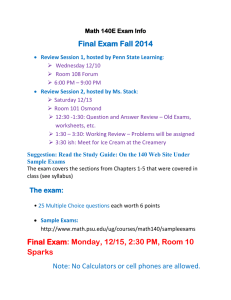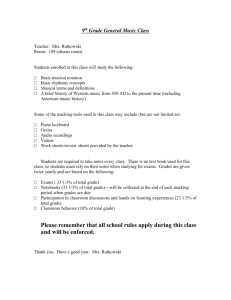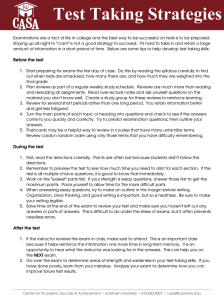Test Taking Strategies: A Student's Guide
advertisement
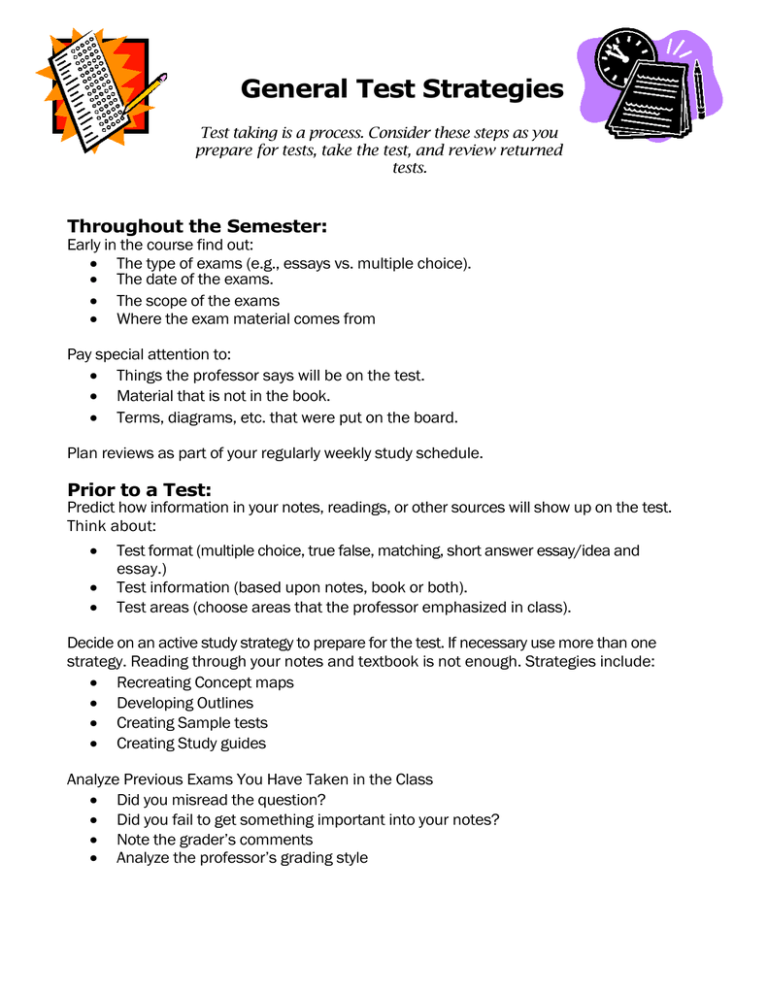
General Test Strategies Test taking is a process. Consider these steps as you prepare for tests, take the test, and review returned tests. Throughout the Semester: Early in the course find out: The type of exams (e.g., essays vs. multiple choice). The date of the exams. The scope of the exams Where the exam material comes from Pay special attention to: Things the professor says will be on the test. Material that is not in the book. Terms, diagrams, etc. that were put on the board. Plan reviews as part of your regularly weekly study schedule. Prior to a Test: Predict how information in your notes, readings, or other sources will show up on the test. Think about: Test format (multiple choice, true false, matching, short answer essay/idea and essay.) Test information (based upon notes, book or both). Test areas (choose areas that the professor emphasized in class). Decide on an active study strategy to prepare for the test. If necessary use more than one strategy. Reading through your notes and textbook is not enough. Strategies include: Recreating Concept maps Developing Outlines Creating Sample tests Creating Study guides Analyze Previous Exams You Have Taken in the Class Did you misread the question? Did you fail to get something important into your notes? Note the grader’s comments Analyze the professor’s grading style The Final Review before an Exam/Test: Take notes on test material if you haven't already. (Consider flash cards.) Use your underlining/highlighting as a guide and be very selective. Recite from your lecture notes and text notes. Make summary sheets of the most important material and any important unlearned material (or separate cards into piles of cards "to learn" and "learned"). Recite from your summary sheets (or cards "to learn"). Make "summary of summary of summary" sheets (or separate flash cards further). Pay special attention to: o Material from the early part of the course o Confusing material o Concepts and principles Take care of yourself the night before the test: Get 6-8 hours of sleep Visualize success (receiving a good grade on the test) During the Test: Get to the test site early so you can select a seat, organize your materials, and be relaxed. Take a few deep breaths to relax tense muscles. Repeat as needed. Do a quick "mind dump" of information you don't want to forget. Write it down on scrap paper or in the margin of the test, if allowed. Read the directions carefully!! Decide how much time you need to allot for each section. Work on the "easiest" parts first to help yourself calm down. Matching questions are often good to start with because they provide a reminder of important terms and definitions. Save time at the end of the exam to review your test and make sure you haven't left out any answers or parts of answers. Keep an eye on the clock. Make sure you'll have time to complete the test sections with the highest value, if not the entire test. After the Test: If the instructor reviews the exam in class, make sure you attend. This is important because it helps reinforce the information in long-term memory. Even if you aren't interested in the "learning" aspect of the class, it is an opportunity to hear what the instructor was looking for in the answers. This can help you on the NEXT exam. When you receive your test paper, go over it to determine areas of strength and weakness in your test-taking skills. If you have done poorly, learn from your mistakes! Always analyze your tests to determine how you can improve future test results. Content partially adapted from handout by Gregory Wells, NACADA Conference. 1987

